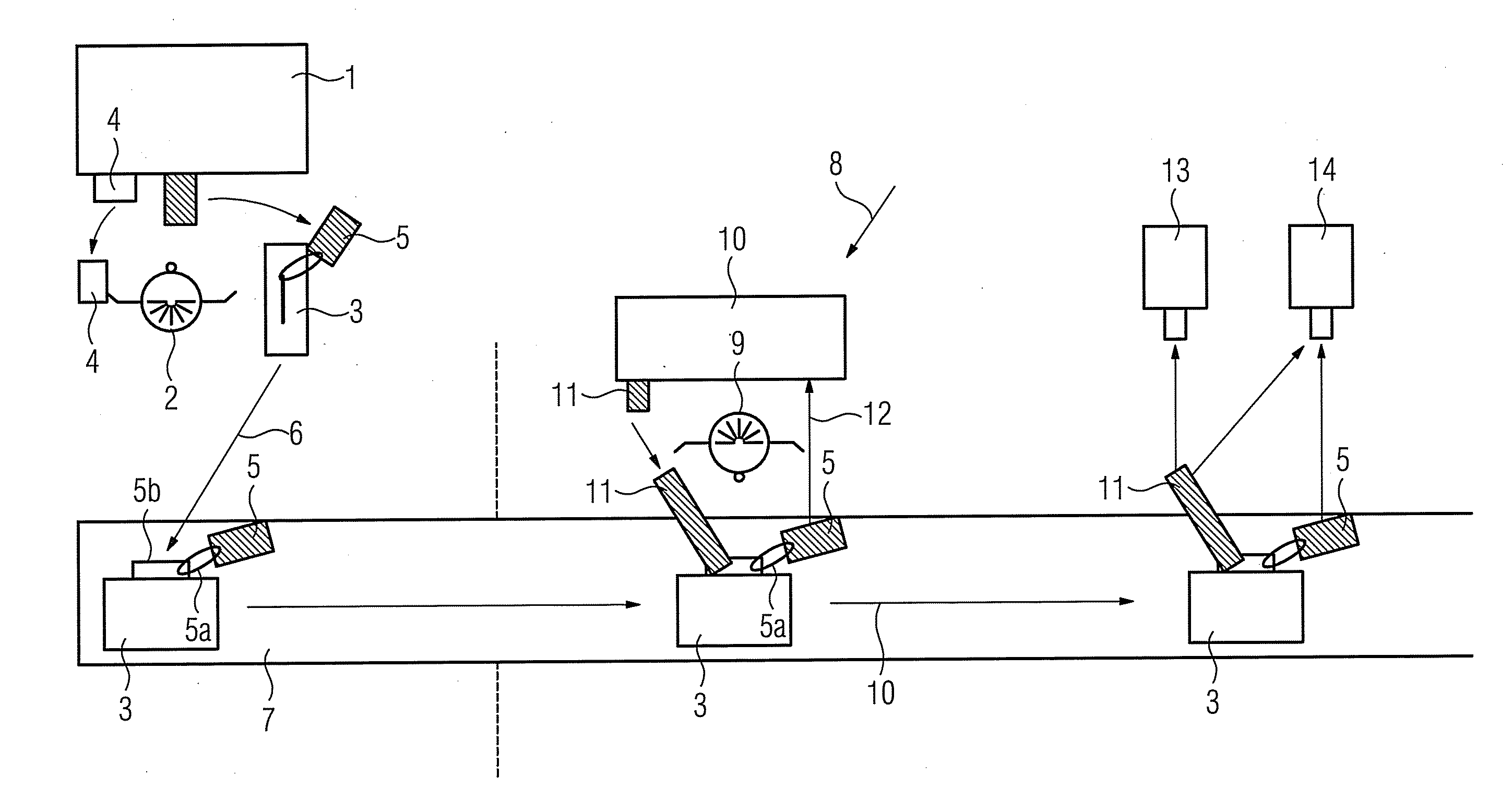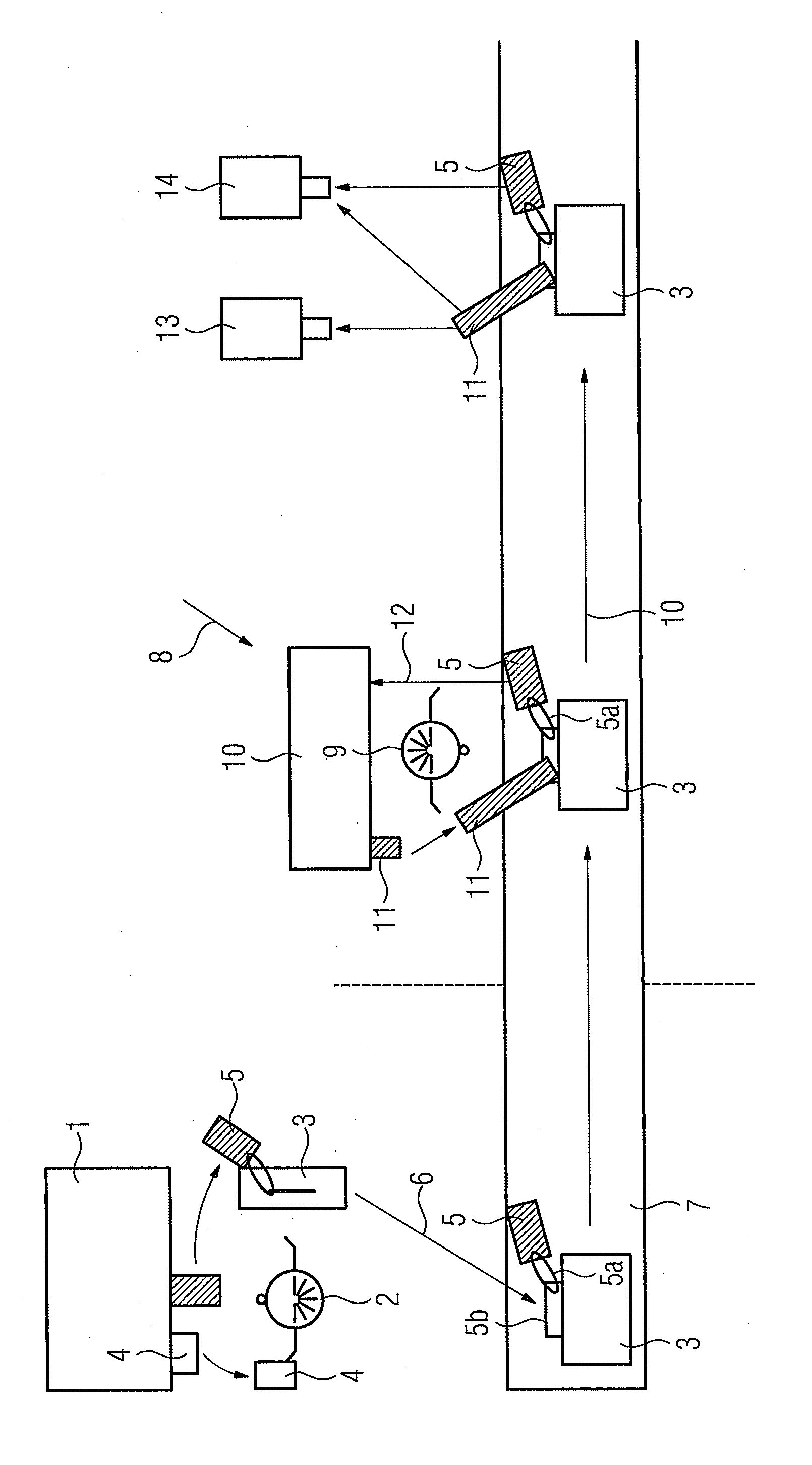Method for automatically checking in passengers and their luggage
a technology for passengers and luggage, applied in the field of automatic checking in passengers and their luggage, to achieve the effect of saving personnel costs, improving service quality, and increasing the probability of successful reading of luggage items
- Summary
- Abstract
- Description
- Claims
- Application Information
AI Technical Summary
Benefits of technology
Problems solved by technology
Method used
Image
Examples
Embodiment Construction
[0030]In the drawing, 1 describes an automatic terminal which is used by the passengers for what is known as “self-check-in”. As a result of input of the booking data, for example using the credit card or a frequent flyer card, the machine prints the boarding card 4, under menu guidance, which the passenger 2 has requested by inserting the card. The passenger 2 wishes to check in a flight luggage item 3 which is to be transported in the hold of the aircraft. In line with the invention, the automatic terminal 1, upon request, prints not only the boarding card 4 but also a luggage tag 5 (also called a baggage pass) which the passenger affixes to the handle 5b of the flight luggage item 3 using an elastic band 5a. As symbolized by the arrow 6, the passenger 2 then place the flight luggage item 3 provided with the luggage tag 5 onto the conveyor belt 7, which transports the luggage item 3 to a workstation 8 further away. There, a worker 9 has the task of using a handheld barcode reader,...
PUM
 Login to View More
Login to View More Abstract
Description
Claims
Application Information
 Login to View More
Login to View More - R&D
- Intellectual Property
- Life Sciences
- Materials
- Tech Scout
- Unparalleled Data Quality
- Higher Quality Content
- 60% Fewer Hallucinations
Browse by: Latest US Patents, China's latest patents, Technical Efficacy Thesaurus, Application Domain, Technology Topic, Popular Technical Reports.
© 2025 PatSnap. All rights reserved.Legal|Privacy policy|Modern Slavery Act Transparency Statement|Sitemap|About US| Contact US: help@patsnap.com


